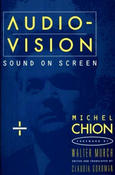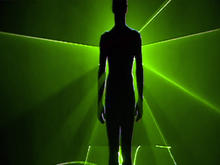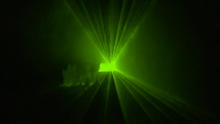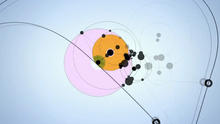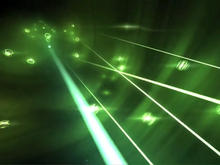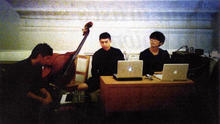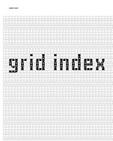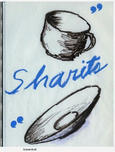Oscilloscope Works
(2004-09)by Robin Fox. The oscilloscope is in ‘polar’ mode, so instead of scanning left to right, displaying the conventional ‘trace’ of the waveform, the trace orbits the screen.
Melbourne artist Robin Fox’s astounding work with the Cathode Ray Oscilloscope has developed to a point of almost incomprehensible complexity and beauty. For those familiar with Fox’s project, the great pleasure has been seeing it evolve over 2 years. However, at this late stage of development it’s hard not to envy the Auckland audience experiencing the work for the first time.
The technical basis is relatively simple: computer generated audio flows directly into an oscilloscope and the electricity excites a single light photon (a bright green dot) which moves frantically around a phosphorous screen.
American abstract filmmaker Mary Ellen Bute tried something similar in Abstronic (1954) (featured in ACMI’s recent White Noise exhibition), but where she played on her oscilloscope a charming number called Ranch House Party, Robin Fox blasts his machine full of scorching electronic frequencies and shards of fractured noise. He might also have dipped the oscilloscope in pure LSD, because on this occasion the “single light photon” embarks on an ‘innerspace’ trip so ecstatic it makes the climax of Kubrick’s 2001: A Space Odyssey feel like an uneventful stroll to the corner store.
Source: Real Time
Digital culture is obsessed with synaesthesia, especially sound/image convergence. From club ‘visuals’ to automatic ‘visualiser’ plugins for mp3 applications, there’s an ideal of sensory fusion at work which draws on cyber/psychedelic rave culture, and utopian new media discourse.
Ideals aside, digital media forms do create new potential for varieties of ‘machine’ synaesthesia – automatic mappings between sound and image. Visualiser plugins offer specific and more-or-less arbitrary mappings of image to sound. While they can’t (promise to) induce a synaesthetic experience, they do offer a machine synaesthesia that might challenge, reorder, or at least reflect on, our own audiovisual perception. Yet most synaesthesia machines are little more than bolted-on nozzles that turn all your favourite tunes into generic visual sludge.
By contrast Robin Fox’s Backscatter disc presents a highly specific and refined synaesthesia machine. He has assembled a simple audiovisual synthesizer using simple digitally synthesised audio and an old analog oscilloscope. The oscilloscope is in ‘polar’ mode, so instead of scanning left to right, displaying the conventional ‘trace’ of the waveform, the trace orbits the screen. Waveforms create woven circles, loops, twisting spirals, filigreed knots.
Response is instantaneous, so the screen jumps and twitches in sync with Robin Fox’s audio signature skitters and blips. The sound-vision mapping is supple, the images beautiful and sometimes surprising. The pieces feel quite controlled, even composed, the way they seem to literally reveal new twists and tricks. Overall, the results are staggering. (Mitchell Whitelaw: Earbash)
Source: Real Time
Synchresis DVD is published by ANAT as part of its Embracing Sound [ES]
Program. Curated by Mitchell Whitelaw, authored by Peter Newman and cover
design by Daydream Graphics.
Synchresis is Michel Chion's term for the "spontaneous and irresistible
weld" between synchronised image and sound. This collection presents recent
Australian audiovisuals that fuse, splice, generate and cross-wire sound and
image into startling new wholes.
Source: ANAT
